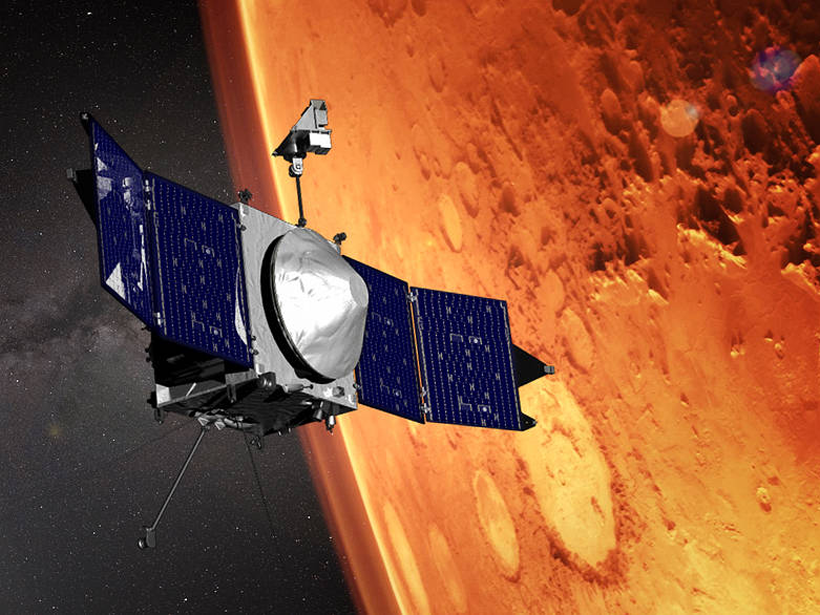Source: Journal of Geophysical Research: Space Physics
Ancient riverbeds, mineral deposits, and abundant additional evidence suggest that water once flowed plentifully on Mars. However, the lack of a protective magnetic field like Earth’s may have made Mars’s atmosphere more vulnerable to the solar wind, which stripped away air and water over time, leaving the planet cold and arid.
In a new study, Thiemann et al. highlight one line of evidence that could help clarify what happened to Mars’s now thin atmosphere. They used data from NASA’s Mars Atmosphere and Volatile Evolution (MAVEN) mission to calculate solar irradiance, the amount of power delivered by solar electromagnetic waves over a given area of the Martian atmosphere. Such measurements are important for understanding the Sun’s influence on Mars.
The researchers worked with data collected by a sensor on the MAVEN spacecraft that measures certain wavelengths of solar radiation known as solar extreme ultraviolet (EUV) radiation. With wavelengths ranging from 6 to 120 nanometers, solar EUV radiation is known to heat the upper atmospheres of both Earth and Mars, and its interactions with gases have an impact on atmospheric composition.
As it orbits Mars in the upper atmosphere, MAVEN’s EUV monitor takes solar EUV measurements every second that the Sun is in the instrument’s field of view, which is approximately 60% of the time. A mathematical model called the Flare Irradiance Spectral Model–Mars (FISM-M) uses the EUV measurements to calculate spectral irradiance, the solar irradiance received by the Martian atmosphere for a specific wavelength.
In their study, the team outlines the capabilities and limitations of the FISM-M model. The algorithms used in FISM-M incorporate concurrent solar EUV data collected in Earth’s upper atmosphere by NASA’s Solar Dynamics Observatory (SDO). SDO data help calibrate MAVEN data and enable calculation of Martian solar irradiance, not only on a daily basis but also after explosive solar flares.
The researchers present solar irradiance measurements calculated using FISM-M between October 2015 and November 2016. These measurements varied due to fluctuations in solar EUV radiation caused by solar flares, the rotation of the Sun, Mars’s elliptical orbit around the Sun, and the progression of the Sun’s 11-year cycle.
The EUV monitor is just one of an array of instruments and sensors that MAVEN uses to study Mars’s upper atmosphere as it seeks clues to the atmospheric history of the Red Planet. The information presented by the team will help inform future research with FISM-M, as well as improvements to the model itself. (Journal of Geophysical Research: Space Physics, https://doi.org/10.1002/2016JA023512, 2017)
—Sarah Stanley, Freelance Writer
Citation:
Stanley, S. (2017), Spacecraft returns its first data on Martian solar irradiance, Eos, 98, https://doi.org/10.1029/2017EO072723. Published on 10 May 2017.
Text © 2017. The authors. CC BY-NC-ND 3.0
Except where otherwise noted, images are subject to copyright. Any reuse without express permission from the copyright owner is prohibited.

